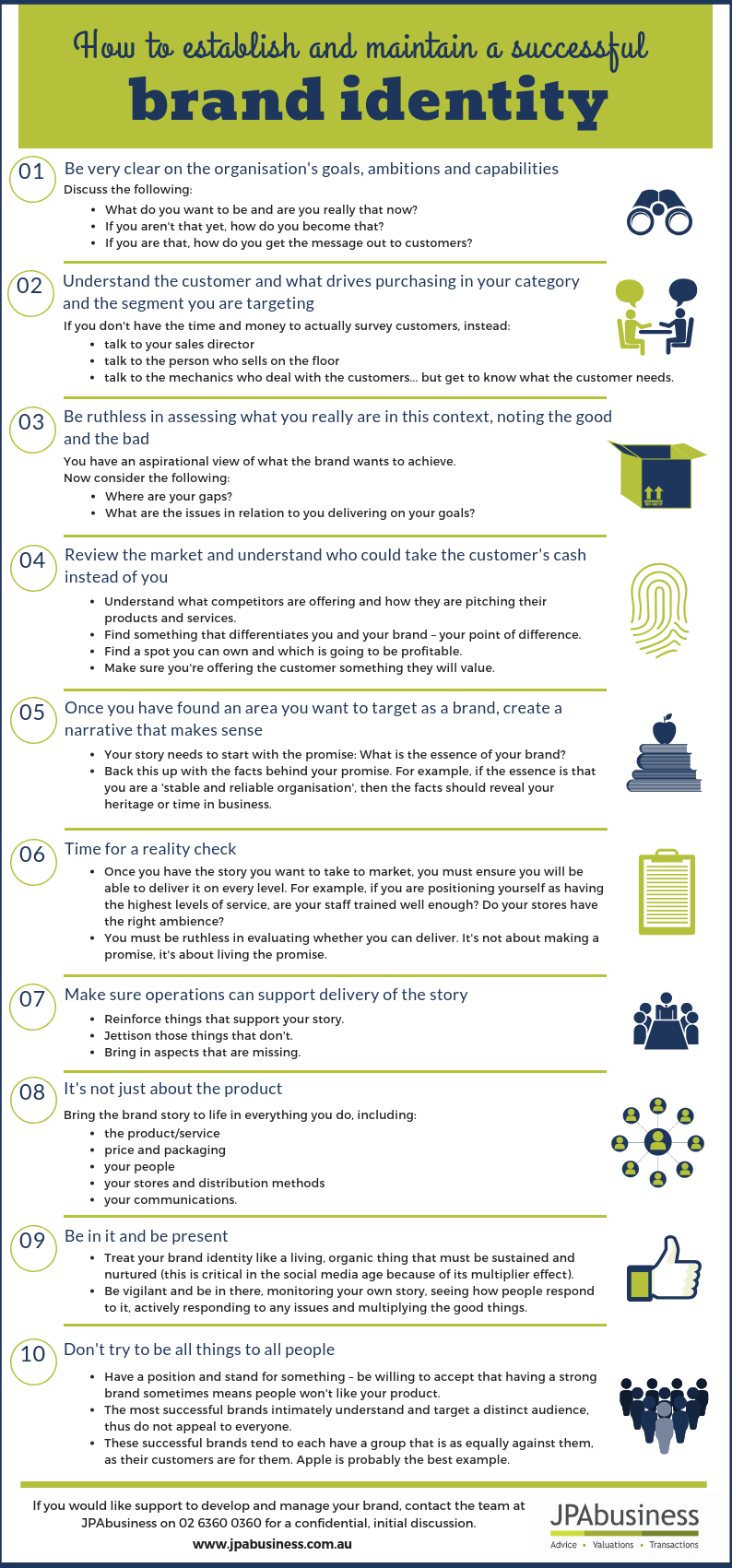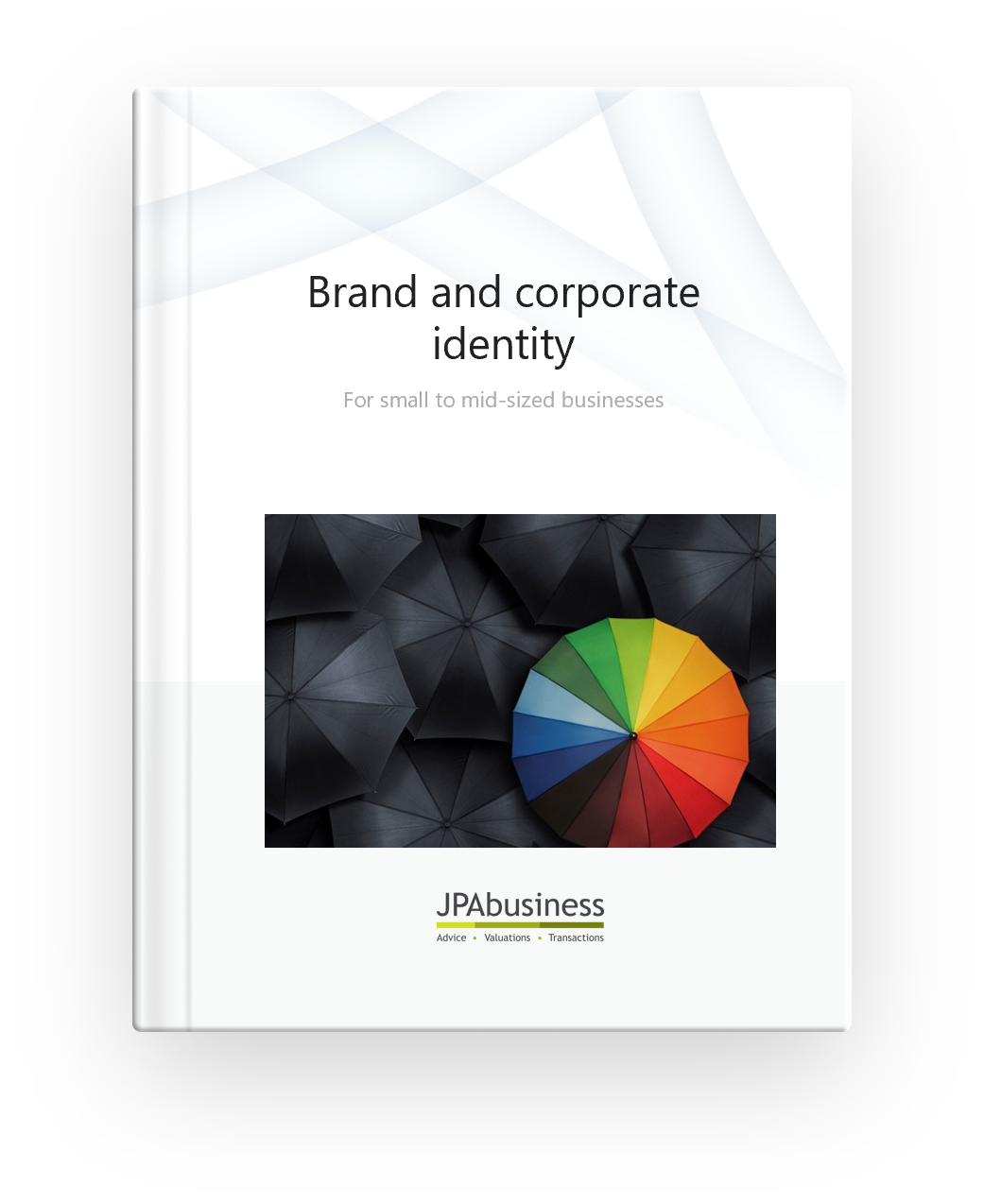
Step 1 in creating a strong brand is being very clear on what your organisation's goals are.
Ask yourself: What to do you want to be and are you really that now? If you aren't that yet, how do you become that? If you are that, how do you get the message out to customers?
A few years back, we partnered with business branding experts Richard Amos and Mike Wilkinson to create our ebook: Brand and Corporate Identity for Small to Mid-Sized Businesses.
In this cheat sheet we have distilled some of Richard and Mike’s valuable tips for establishing and maintaining a successful brand identity.
Click on the image to download a pdf version of the cheat sheet.
Why invest in brand identity?
People’s responses to brands are visceral and powerful.
How they feel when impacted by a brand will determine whether they notice it, adopt it, buy it and tell their friends about it.
Brands invoke emotion through shape, colour and movement and emotion plays a major role in people’s desires and decisions around how they spend their hard-earned cash.
Brands can impact businesses positively by:
- justifying a price premium for products and services;
- reinforcing crucial cues that are critical to consumer buying behaviour, and
- creating loyalty, leading to long-term repeat purchases and word of mouth endorsement.
The last point in that list – loyalty – is crucial.
There is a lot of effort involved in persuading a customer or client to move through the decision-making processes and ultimately choose to purchase your product.
Once they do make a purchase, you want them to come back and, more importantly, you want them to work for you as brand marketers.
Repeat purchases and word-of-mouth endorsements are the holy grails of marketing!
What are the internal benefits of a strong brand?
Having a strong and clear brand identity also offers value in terms of the internal alignment it can bring.
Just understanding the dimensions of the brand, the values of the brand and the personality of the brand can help internal decision-making.
There are some very famous cases of this from the past and one of the best is Avis and Hertz:
From inception, Avis had trailed Hertz for market share and, by the early 1960s, had been in the red for 13 years.
In 1962 Avis’ new president appointed a creative ad agency that came up with the slogan ‘we try harder’ i.e. we will always be the challenger brand so we’ll always have to work harder for you, the customer.
Rather than just using it in advertising, ‘we try harder’ became the company manifesto, with every facet of the business overhauled over the next four years and market share rising from 11 per cent in 1962 to 35 per cent in 1966.
Avis employees ‘lived’ the brand and used it in their day-to-day decision making.
They didn’t need to have 50 meetings to know ‘we try harder’ when it comes to customer service, or getting a job done, or whatever other issue they were dealing with.
When a brand is internalised in this way, it means that if any employee sees a value or behaviour that is ‘outside the brand’, it can be quickly identified and rectified.
If you would like support to establish and maintain a successful brand identity for your business, contact the team at JPAbusiness for a confidential, obligation-free discussion.


